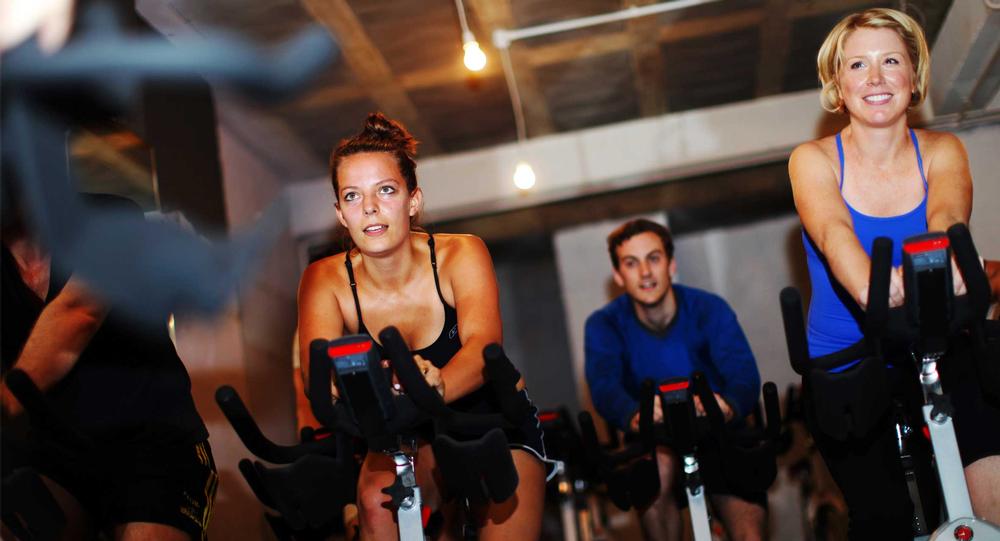features
Internet middlemen: Friend or foe?
In the second part of their internet middlemen series, Stephen Tharrett and Mark Williamson of ClubIntel take an in-depth look at US market leader ClassPass

ClassPass has a dual brand promise. By allowing its members to access classes across its network of partner clubs and studios, the first part of its promise is a consumer one: one that’s built around incredible convenience, the flexibility to work out at a host of great venues – and all at below market price.
Second is the promise promoted to club and studio owners (partners) that involve new consumer traffic, the potential for more members or regular clients, incremental revenue growth, increased brand presence and brand recognition.
Let’s take a look at how well ClassPass delivers on these promises.
The consumer promise
ClassPass does an excellent job of delivering on its consumer promise. First, it offers convenience and flexibility: consumers can go online and reserve space at over 3,000 studios – typically at a time that’s convenient for them, although recently some operators have begun to limit the number of classes they open up to ClassPass members.
Second, the price is incredible value. Access costs US$79–US$125 a month, and typically around US$99. If you take IHRSA’s 2015 Health Club Consumer Report data, which shows the average boutique member visits their studio 80 to 117 times annually (seven to 10 times a month), that equates to a price of US$9.90–US$14 per ClassPass visit.
That’s significantly less than the average list prices charged by boutique studios: AFS’s 2015 Fitness Studio Operating and Financial Benchmarking Report showed the average monthly price charged by studios for unlimited access to group exercise was US$111, and for small group training US$159. The charges for a single group exercise class or small group training session were US$24 and US$34 respectively.
Consumers therefore pay considerably less – anywhere between US$10 and US$20 less per visit – using ClassPass than if they go directly to the studio.
In an article on Mindbodygreen.com last year, the author highlighted 10 things only ClassPassers understand. One of those was: “Paying the regular fee for a class which isn’t on ClassPass seems insane.”
We have to give ClassPass a score of nine out of 10 in delivering on its consumer promise; the only thing preventing it from a 10 is the fact that many clubs and studios have begun to limit class availability. If class availability erodes, it may become harder for ClassPass to deliver on its promise.
The partner promise
The promise to studios has several elements, so let’s look at each separately.
Increasing brand presence, brand recognition and brand value
ClassPass is very similar to other digital middlemen in the way it builds its brand on the back of its hosts. We know who Uber is, for example, but do we know the names of the drivers? We know who Airbnb is, but do we know the homeowners whose home we use? Do studios get the press ClassPass receives? No – not even the big names that have signed up, including Barry’s Bootcamp, Flywheel, Crunch and Gold’s Gym.
Operators are certainly exposed to a significantly larger audience of consumers by being on the ClassPass platform, but they are one of more than 3,000 options competing for a share of attention.
In addition, when you bring in consumers at a price point that’s typically 50 per cent below the single session rate of your discounted 10-pack rate, it devalues the studio’s brand – consumers begin equating the value of the studio’s experience with the ClassPass fee.
We have to give ClassPass a score of four out of 10 in fulfilling this partner promise, though for some start-up clubs and studios the fact they gain wide exposure may offer greater value in the short-term than the possible devaluation of their brands over the long-term.
Increased consumer traffic
According to the aforementioned AFS study, the average number of monthly visits generated by studios using ClassPass was 65 (approximately two a day), or 3 per cent of the studio’s overall visits. The highest volume of monthly visits generated by ClassPass was 300 (approximately 10 per day). In this instance the traffic represented less than 3 per cent of total client visits.
But these numbers do vary. We recently obtained ClassPass usage data from a national boutique operator which indicated that, across its brand, it had approximately 130 ClassPass visits per studio per month. Data from one yoga studio showed that, for the classes it opened to ClassPass, 75 per cent of participants were from ClassPass rather than its regular client base. Finally, one operator of traditional health clubs received approximately 120 additional visits per club per month from ClassPass.
It should be noted that not all these guest visits are unique, as a ClassPass member can use a studio up to three times in one month.
While this data may not be reflective of the entire boutique or club industry, it does offer a realistic glimpse. On an absolute basis, it appears ClassPass generates a reasonable level of additional traffic, although when looked at as a relative percentage of the total visits a studio experiences, the average traffic increase is small. Nevertheless, as the above data shows, there are clubs and studios that receive a greater number of ClassPass visits. For them, the traffic numbers may be more significant.
We would give ClassPass a score of six out of 10 in fulfilling this partner promise.
Conversion of guests to members
In the AFS study, the average conversion for studios using ClassPass was 6 per cent (the percentage of unique ClassPass visitors who go on to acquire a membership or class pack at the studio) – conversion rates were typically below 10 per cent and in some instances as low as 2 per cent.
These conversion rates are eerily similar to those seen in other digital business models that offer a free or low-price value proposition and then attempt to upgrade the user to a premium experience. For example, in the free-to-play video game market, conversion rates range from as low as 0.5 per cent to as high as 30 per cent, with an average range of 2–5 per cent. Meanwhile platforms such as Dropbox and Skype see conversion rates to premium services in the neighbourhood of 4–6 per cent.
If high conversion rates aren’t being achieved, the only other way for internet middlemen to drive significant absolute conversion for a seller is to generate extremely high visit counts – in video gaming, the audience can be in the millions, sometimes even tens of millions. As noted above, however, in fitness the absolute number of visits remains fairly small.
Some might hope the sense of community created by boutique studios especially might influence conversion rates. However, in the Mindbodygreen article mentioned earlier, the author noted that: “You bond with other ClassPassers.” If ClassPassers already have this sense of community, then conversion becomes a nightmare.
But potentially the biggest challenge to conversion has to do with price. A monthly subscription to ClassPass is lower than the average studio’s subscription pricing, and in some instances significantly lower. When it comes to more traditional health clubs, the ClassPass pricing may actually come at a higher price point.
We give ClassPass a score of two out of 10 in fulfilling this partner promise.
Generating incremental revenue and profit for studios
The revenue potential of any partnership with internet middlemen is driven by the volume of additional guest traffic driven by the partnership (increasing class occupancy), the rate received by the seller for delivering the service, and the seller’s ability to convert the guests to regular clients. The key to driving incremental revenue is to leverage at least one and preferably all of these variables.
In the case of ClassPass, the seller typically receives 50 per cent of its base price for the lowest priced class pack – in essence 40 per cent of its single session base price. For example, one yoga studio we talked to that offers a 20-pack price point of US$320 receives US$8 from ClassPass for each visitor. One club operator we talked with indicated that they get US$3 for a gym visit and US$10 for a class visit. So from a price point perspective, the seller is sacrificing a considerable amount of revenue.
In respect to driving incremental guest traffic, the data clearly shows that on average most boutiques gain at least 65 additional guest visits a month (22 unique visitors) from ClassPass; some gain closer to 300 additional visits (100 unique visitors) a month. Viewed from this perspective, the seller gains a revenue advantage.
Lastly, with an average conversion rate of 6 per cent (AFS study), the seller obtains some benefit, but minimal. Having said all this, let’s take a look at some revenue numbers based on AFS data.
The average studio generates 65 additional visits each month at an average of let’s say US$12 per visit (50 per cent of the average price charged for a single class by a boutique in the AFS study). Using these numbers, the average studio will generate US$780 in additional monthly revenues (we’re assuming that without ClassPass they would not have these additional visits). If we then take the average of four conversions at an average price of US$111 per month (average monthly fee charged for group classes by studios in AFS study) that comes out to another US$444 a month. All told, that’s US$1,224 a month in incremental revenue. Not a great number, but for a small studio it could be the difference between going out of business and remaining in business.
Now let’s look at the cost to generate the revenues from the above scenario. By offering a 50 per cent discount to attract the additional guest traffic, the club/studio is sacrificing US$12 in revenue per guest visit. Therefore, the sacrificial cost of generating those 65 additional visits each month is US$780, equal to the revenue generated by those visits. Since the average club would generate US$1,244 in additional revenue at a cost of US$780, the average monthly profit would be US$464 or US$7 per guest visit (63 per cent cost margin, compared to average studio marketing costs of 4 per cent). As the data shows, while you garner new revenues, the cost of acquiring those revenues is extremely high.
Chances are most operators don’t assess their costs in this manner, though they should. Instead, most will see their margin as the total revenue from a class divided by the cost for the class (instructor payroll).
So let’s evaluate the profit effectiveness of ClassPass from this perspective. Let’s say, before ClassPass, you average 12 students per class at a rate of US$24. That represents US$288 in revenue before instructor costs. Let’s say your instructor receives US$60 for teaching the class. The cost margin is 21 per cent, with a profit of US$228. ClassPass now provides an additional two students per class (based on data from a national boutique operator) at US$12 per class – that’s another US$24, bringing class revenue to US$312 with a profit of US$252 and a cost margin of 19 per cent. If you have 15 classes a week open to ClassPass guests, you’d increase incremental class revenue by US$360 a week and with a lower cost margin. Using this approach, there’s revenue and profit to be gained by using ClassPass.
What we haven’t brought forward is the possible cost associated with a devaluation of your brand, and the cost of existing clients switching to ClassPass as a result of the favourable pricing and flexibility it offers. Unfortunately at this time we don’t have data to model this cost. What we do know is that, if members are able to get an experience with ClassPass that’s similar to what your studio or club offers (good instruction, energy, camaraderie) – and at half the price – they will be inspired to switch.
As a result of the above discussion, we would give ClassPass a score of four out of 10 in fulfilling this partner promise.
Nevertheless, if a studio operator is vigilant about what classes they open up to ClassPass guests (limiting them to only low occupancy classes) and negotiates hard for higher than average fees (above the standard rate of 50 per cent), then the revenue and profit benefit of ClassPass is reasonable and makes sense – see part one of this series (HCM NovDec 15, p44) for our tips on this.
If these steps aren’t taken, however, it’s probably a losing proposition in which you gain a small amount of short-term incremental revenue while devaluing your brand and having your client base shrink.
Based on this deep dive into the ClassPass value proposition, we can definitively say that it’s a fabulous deal for the majority of fitness consumers, but for studios, care must be taken to ensure it’s a symbiotic, not a parasitic, relationship.
About the Authors

Stephen Tharrett and Mark Williamson are the co-founders of US-based ClubIntel (club-intel.com).
A complimentary abbreviated AFS report is available from ClubIntel.






































































